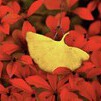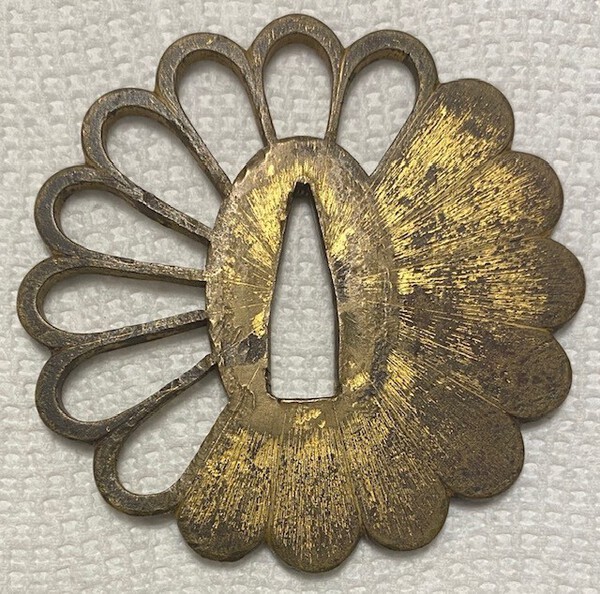-
Posts
1,961 -
Joined
-
Last visited
-
Days Won
5
Content Type
Profiles
Forums
Events
Store
Downloads
Gallery
Everything posted by Mark S.
-
Signed tachi mei. Remove the gold collar (habaki) and take pictures of the area between the signature / date and where the tang and polished part of the blade meet. We are looking for a stamp that is often located in that area. As previously stated, the habaki is on backward and needs to be turned around. The ‘notch’ on the top of the habaki should face toward the tip of the blade.
-
As this listing is in the For Sale section (and there are some guidelines about discussing items that are for sale), I will not discuss $$$. Usually I wouldn’t even discuss the quality of the blade or why it is worth more or less but you did ask. BTW, Hojoji is one of my favorite schools. POSITIVES - Blade appears in very nice condition. - Full koshirae. - Well regarded school. - A good addition for someone who wants to add this particular smith to their Hojoji collection if they already have several other smiths, and would probably be an interesting addition. NEGATIVES (ALL in my VERY humble opinion): - Not papered so buyer better feel the Mei is Shoshin and accepts all the risk if blade is gimei. - wakizashi market is VERY soft in an already soft market. Katana and tanto have held up better as most people tend to want those if they have to choose. All things considered, wakizashi are simply not valued as highly. - Japanese yen is lower than in the past making purchasing blades directly from Japan much more reasonable and cost effective. You’re competing against many more blades. - This blade does not exhibit the typical characteristics of the Hojoji school (that I find so interesting). Usually Hojoji hamon first appears suguha and then upon closer inspection, deep ashi gives the hamon an almost gunome appearance. Now, I am not saying that the hamon on this blade is not representative of this particular Hojoji smith, or is ‘wrong’ or ‘bad’. It just isn’t typically what we see. This could be a positive or a negative depending on the buyer. - Not everyone has a spare $3,000 to part with. I’m not saying you can’t or won’t find a buyer. The right one just hasn’t come along.
-

Chicago show
Mark S. replied to tokashikibob's topic in Sword Shows, Events, Community News and Legislation Issues
Looking forward to the Chicago show! -
No dead horses were harmed in the making of this thread.
-
Unless there are some major flaws you are not showing us, I would say you did all right. Think of it like this… papers cost about $300 to obtain, so you got the blade for $300 to $400.
-

A word about amateur polishing
Mark S. replied to Brian's topic in General Nihonto Related Discussion
How will you address the issue of learning kantei so you can then properly know what the blade was supposed to look like when created by the school or smith; selecting the right stones (there is a reason they have MANY stones, and not just different grit) to bring out the details of the blade so it (as closely as possible) highlights the characteristics of individual time periods, schools, smiths, etc.; selecting the right final polishing stage(s) that allow for the best viewing of the characteristics of specific time periods, schools, smiths, etc.; learn to correct many common flaws; learn to polish to avoid making certain flaws MUCH worse; etc., etc., etc.? I guess I will ask the obvious question… why do you believe there is a 10 year apprenticeship, and why do you believe those that promote that apprenticeship as necessary do so? -
First kanji is: ??? Middle kanji is: Kane Last kanji is: Masa? VERY wild guess based on entry in Sesko Nihonto Compendium.
-
Don’t worry… it took us all a long time to realize (unfortunately) that what you hope for is not the goal in these threads.
-
Blade at Usagiya site. I did not realize saiha (retempered) blades could paper (unless very famous smith or significant blade)? NOT a judgment of NBTHK, blade, or the seller. Just found this info interesting.
-
Very dark room. Blade at an angle away from you with single light source opposite you as look down the length of the blade. Degree of angle up or down is based on angle of light source and eye to get best view. Hamon left or right does not matter as it depends which side of blade you wish to observe. I guess if your not being exact, this is relatively more horizontal. Then sometimes turn and have light source behind you (over shoulder). Different angles, light sources, etc provide different results. I guess if your not being exact, this position is relatively more vertical. Pic: angle view, light from front. Both images are from Usagiya website.
-

A word about amateur polishing
Mark S. replied to Brian's topic in General Nihonto Related Discussion
I do appreciate the detailed explanation… thank you! -

A word about amateur polishing
Mark S. replied to Brian's topic in General Nihonto Related Discussion
In an effort to learn, I’ll risk embarrassment and ask the uneducated question… did the quarries close because quality stones were no longer available, or because it no longer makes economical sense to search for, cut, and process what might be left? If artificial stones become the only alternative in the future, the collecting community may have to adjust their expectations of what a quality polish looks like and polishers may have to adjust their techniques to get the most out of ‘new technology’. -
I guess you know why I’m asking then. The example I chose was just a little clearer than the one I own now. Just wanted to learn more.
-
Looks like it.
-
As the blade is for sale on a Japanese Dealers website, I didn’t post the whole picture. I’m not deciding to buy it, I was just using it because it had a clear photo of what I was asking about. If posting the whole nakago is an issue, I’ll ask Brian to delete.
-
Please excuse if this has been asked/answered before. Wasn’t sure what term to use in search function. Found this example on line and have seen it before. There is a distinct line on the nakago of this suriage blade. Was it a ‘guide’ for the person shortening the blade or was it placed to determine ‘old’ from ‘new’? Very obviously on this blade, it differentiates the where the file marks change. Not all suriage blades have this mark. Finally, does this line have a ‘name’? Any discussion or thoughts on this are invited. Interesting also is that (to me) the upper mekugi-ana seem older than the lower one, which you would think would be opposite.
-

A word about amateur polishing
Mark S. replied to Brian's topic in General Nihonto Related Discussion
No no no… I’m all in. This has been enlightening and liberating. You see, for the longest time I have believed that all tsuba are the same… whether iron, iron with inlay, and soft metal… no matter school, age, maker, style, or quality and that I can improve them all by restoring them to bare metal with various acid treatments, steel wool, and other chemical/abrasive treatments. Also, in an effort to improve them, I believe it best to experiment with different DIY treatments to restore what I believe was their original state. Shiny is much better than the destructive patina from ages of neglect. It really is the only way to ‘learn’ and who knows what is hidden under all the patina, grime, and years of handling? It is up to me to unlock all their secrets by removing all that junk. Besides, who made the ‘rule’ that patina is ‘good’? Why are we locked into silly traditions and limited by past notions and practices? HELL NO I SAY!!! People here are just holding me back. My only fear was the dinosaurs here who would criticize my methods and rain down heaps of negativity upon me. While my controversial views might not be for everyone, I finally feel like I have found a brother in arms. The rest here don’t understand us. The best part is I know I am right simply because I believe I am right and that is all the justification I need. Let’s face it, no one can stop me anyway, so they might as well all just roll over and accept it… Sooner or later they all have to realize… it’s them… not me… -

A word about amateur polishing
Mark S. replied to Brian's topic in General Nihonto Related Discussion
OK… everyone should do whatever they want to whatever they want in any way they want no matter what and we should be required to support and celebrate it. Is that more along the lines of the positivity you are looking for? I apologize to member Hokke for disagreeing with his “they just don’t care” theory. Maybe I was wrong…. Joe is right… an amateur destroying a blade is the only way to learn and should be considered a ‘best practice’. Damn the advice from naysayers… full speed ahead. -

A word about amateur polishing
Mark S. replied to Brian's topic in General Nihonto Related Discussion
AKA “opening a window”. A QUALIFIED polisher will select one or more locations on a blade and PROPERLY polish just that area(s) until activity can be seen so blade can be evaluated. Now… why do I say QUALIFIED? Because they also know how to polish the window so that if the blade warrants a full polish, the window they previously polished isn’t detrimental to the future full polish. -
Remembered I had this 16-petal one in the mix. Came off a mismatched very poor koshirae. I know nothing about it and really never gave it much thought.
-
There are a couple old threads related to this smith. WW2 undocumented smith. The search function should get you more.
















